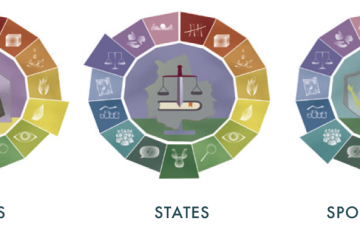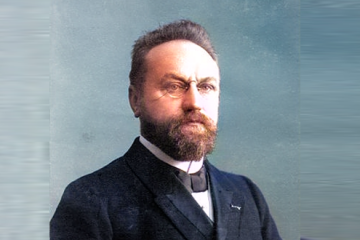As a seminarian in a former life, I was cautioned against being “a quivering mass of availability” (a phrase from American theologian Stanley Hauerwas); but in a congregation, this seemed to be what was most desired from the pastor. Many Christians receive comfort and encouragement from their pastors; but what about those who are determined to inflict only pain and suffering on the pastor? Every pastor knows that at some point some of their members will work out their own unacknowledged or unresolved brokenness by trying to stab their minister in the back. Many pastors end up in burnout because they have had to adopt a watchful eye for those keeping track of “every breath [they] take.”
Pastors, like social workers and psychotherapists, are lumped together today as part of what’s called the “helping professions.” The idea is that people have hard lives and face difficult challenges; when it gets to be too much they turn to a professional who can help them. “Every Breath You Take” (an echo of Sting’s haunting song by the same title and released by the English rock band The Police in 1983) is a film about what happens when someone turns to a helper not to receive help from them but to inflict hurt on them. What happens when a carer is targeted by a client who is intent to hurt and destroy their career?
The film chronicles an affluent American family. The father (Casey Affleck) is a psychiatrist; the mother (Michelle Monaghan) is a real estate agent; and their teenage daughter (India Eisley) is majoring in existential angst, complete with the heavy black eyeliner. The opening scene of the movie captures the trauma that launches the drama: the death of the couple’s young son in a freak car accident. Both parents have responded in their own way: mostly by retreating into their own individual world, leaving their daughter all alone with her high school dropout scene of petty crime and drug experimentation. (Up to this point, the film could be faulted with being a bit too cliché.)

Then, one of the father’s patients comes into view. His help has been transformative in treating this patient’s unresolved depression and suicidality. In one scene he’s shown giving an academic paper to students on his brave treatment technique, using this “healed” patient as a case study. His non-traditional form of therapy is to share with his client his own inner brokenness from his son’s death in the belief that, by showing his patient that everyone bears suffering in life, she won’t feel all alone and will grow to accept her own form of suffering as no less, and no more, than anyone else’s.
But then this patient dies (or is killed?) and his practice is thrown into legal and professional question – resulting in the dramatic build-up of the film as the brokenness of the family and the brokenness around this deceased patient collide in spectacular deception, malevolence, violence, and death. All of a sudden, this helping professional – already struggling with the death of his son and the breakdown of his marriage and the alienation from his daughter – is flooded with self-doubt, paranoia, fantasies of revenge, and professional surrender.
There are many ways one could think about this movie. Clearly, there are implications for those in the “helping professions.” But I have been wondering about this movie from the perspective of a university professor (with parallels for students as well). It is to these power dynamics that I’ll turn to in next week’s post.
- Biblical – Not Biblicist – Scholarship - July 3, 2023
- How ‘biblical’ is “Biblical Critical Theory”? - June 6, 2023
- The Importance of Culture for Academics - May 8, 2023


